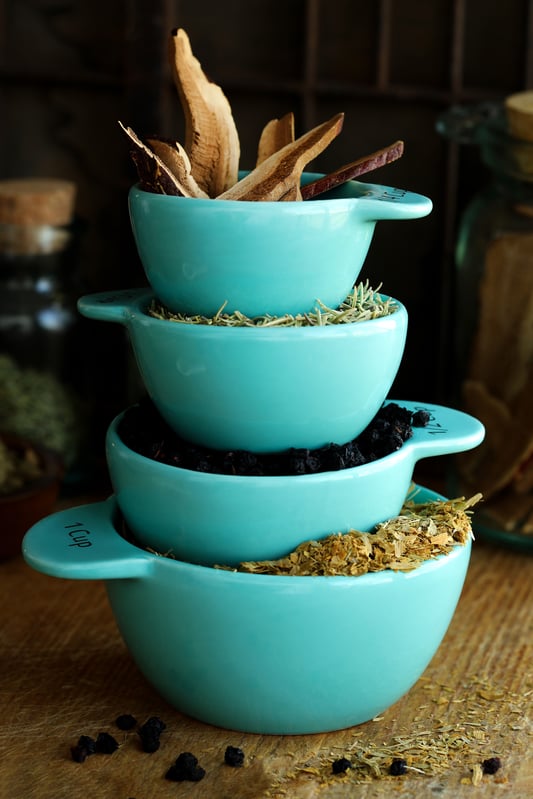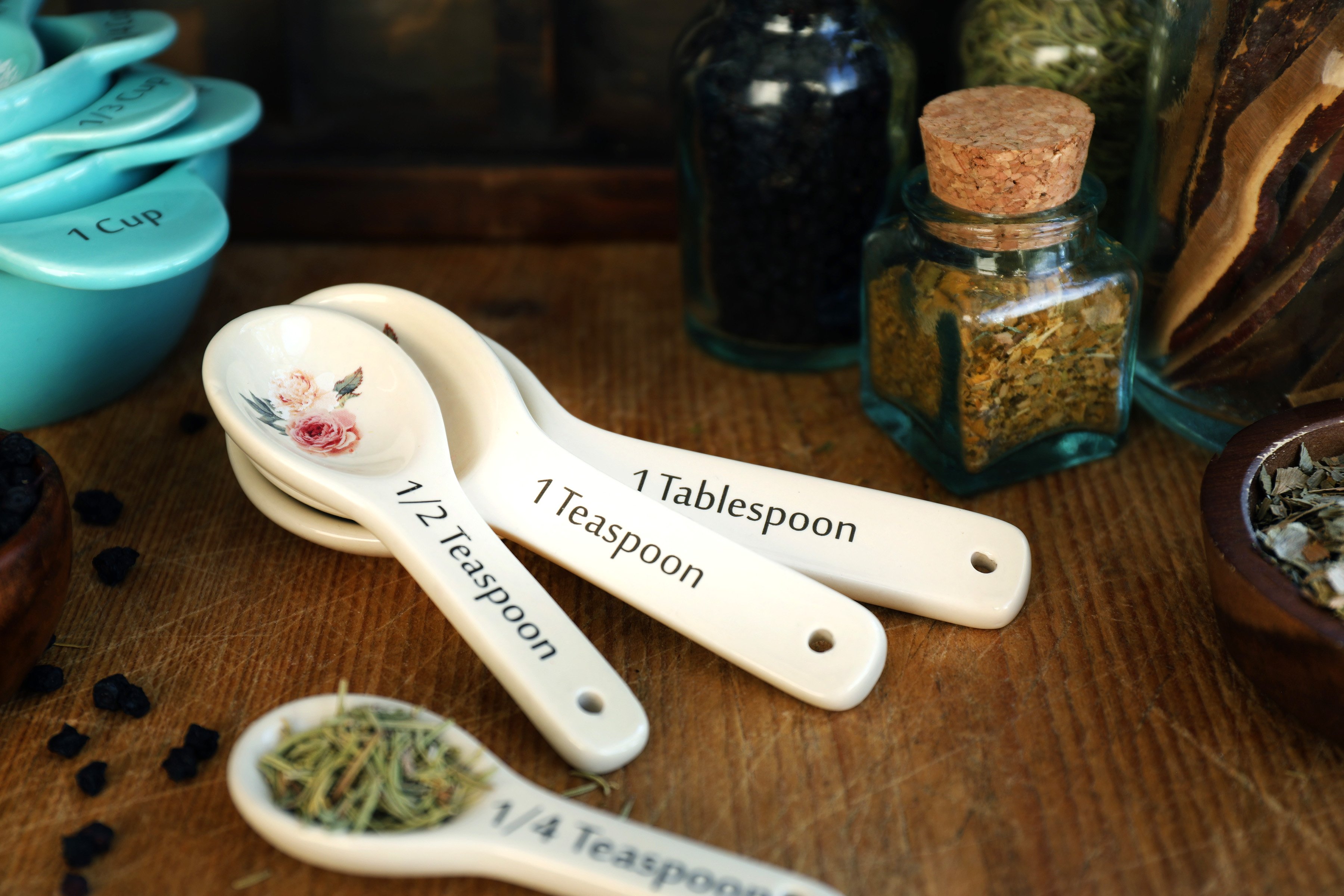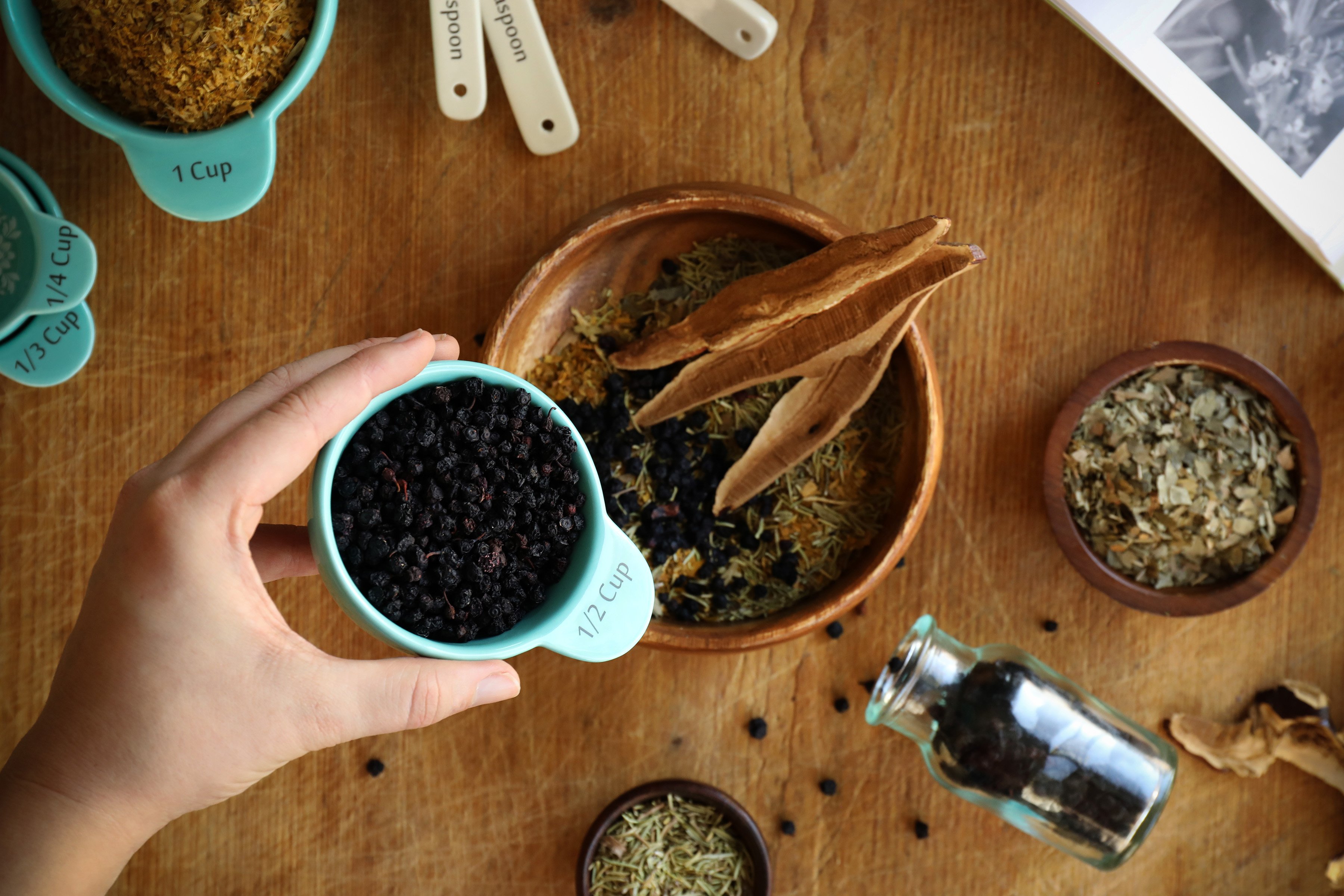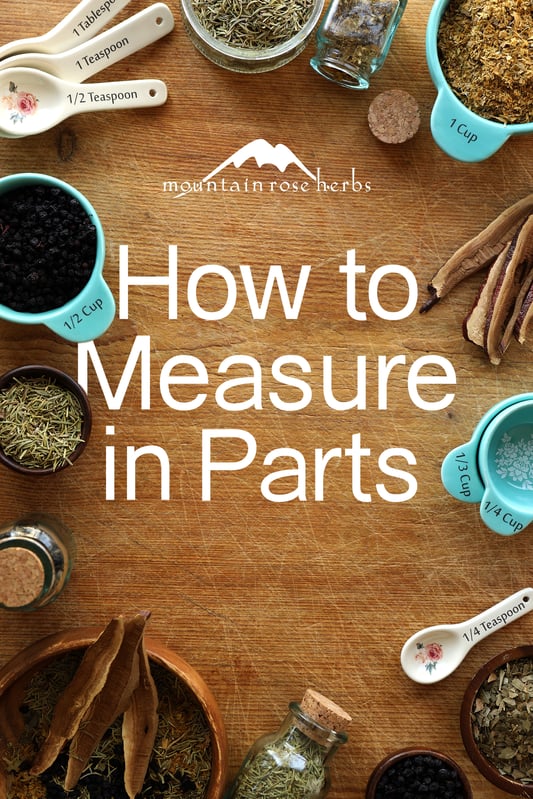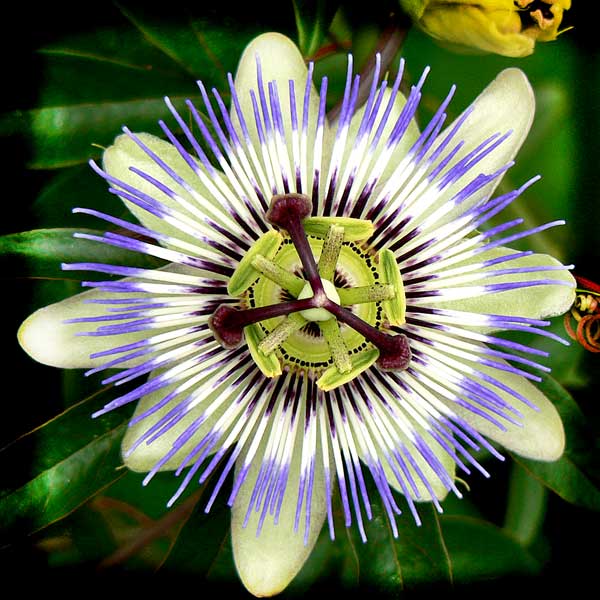I like to think of folk herbalism as the herbal modality of the people. It is a general term encompassing plant remedies used by common “folk,” and it varies based on the traditions and local plants with which a given community has formed a relationship. One of the most accessible aspects of folk herbalism is the use of parts as measurement, which is sometimes referred to as the Simpler’s Method. This easy and universal measuring system has been used for recipes and formulations passed though many generations and continues to be used as the method of the people today.
Why Measure in Parts?
Back in the day, herbalists did not have exact measuring implements, so instead, they used whatever they did have — their carved wooden spoon, or their handmade drinking vessel. It is for this reason that many folk remedies are measured in a way that you can scale down for a single serving or scale up if creating formulas you’ll be using for the long term. Parts can be measured with a teaspoon, a measuring cup, or even your favorite mug or bowl if you want to connect with the methodology of your ancestors.
It is my personal belief that the marriage of the scientific and the folk approach is what creates a well-rounded understanding of herbalism. Science is important but should never completely replace the heart and the use of intuition, on which traditional herbalism was founded.
How to Measure in Parts
The best way to learn the measurement of parts is by actually doing it. Here is an example that can be found in Rosemary Gladstar’s book Herbal Recipes for Vibrant Health. As a folk herbalist and educator of The Science and Art of Herbalism, Gladstar teaches budding herbalists how to measure in parts for many of her recipes. One particular recipe, a nootropic herbal blend that can be made into a DIY tincture or homemade capsules (she calls it her "Brain Alert Formula"), reads as follows:
- 2 parts organic gingko biloba
- 2 parts organic gotu kola
- 1 part organic bilberries
- 1 part organic reishi mushroom slices, chopped
- 1/4 part organic rosemary leaf
Starting Small (or For Single Servings)
If you were looking to try this formula out on a smaller scale, you could start with a tablespoon as your implement. That would look like this:
- 2 Tbsp. organic gingko biloba
- 2 Tbsp. organic gotu kola
- 1 Tbsp. organic bilberries
- 1 Tbsp. organic reishi mushroom slices, chopped
- 1/4 Tbsp. (or 3/4 tsp.) organic rosemary leaf
Scaling Up REcipes
And once you know that you like the recipe, you can scale this recipe up to enjoy and share. You can simply replace the tablespoon with a 1/2 cup measuring scoop. This would look like this:
- 2 scoops (equivalent to 1 cup) organic gingko biloba
- 2 scoops (equivalent to 1 cup) organic gotu kola
- 1 scoop (equivalent to 1/2 cup) organic bilberries
- 1 scoop (equivalent to 1/2 cup) organic reishi mushroom slices
- 1/4 scoop (equivalent to 1/8 cup) organic rosemary leaf
When Not to Measure in Parts
In a world without standardized measuring tools, measuring in parts may be your best option for achieving consistency in your recipes. However, since most of us now have access to any number of reliable measurement devices, there are times when measuring in parts may be more troublesome than helpful.
Measuring in parts requires you to get all your ingredients into the same unit, so if you're dealing with a recipe listing ingredients in teaspoons, tablespoons, and cups, converting all of that to parts may leave you with some pretty unwieldy measurements if you hope to stay accurate. For example, if a bread recipe calls for a cup of flour and one teaspoon baking soda, you'll need to convert the cup into 48 teaspoons to measure accurately (since it's pretty tough to eyeball 0.020833 cups). Scooping out 48 teaspoons of flour probably isn't a great use of your time, so we'd recommend sticking with the original units instead.
Practice Your Skills with Measuring in Parts
Try this Calming Marshmallow Rose Tea Recipe
You May Also Enjoy:
- Making Four Thieves Vinegar for Cooking and Cleaning
- How To Create Your Own Herbal Tea Blends
- How to Find a Qualified Herbalist or Naturopathic Doctor

